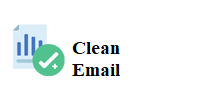Customers leave and take with them money that could have been yours. It’s inevitable. But a well-structured chain of letters will help reduce losses.
In 2018, we already shared our case study on how to bring back lost customers using email marketing. This year, we repeated the experiment, making some small changes, and are eager to share the results.
Why did we do this?
It is necessary to return lost users in order to:
- Not to lose the funds invested in attracting them.
- Improve your reputation. A customer who has been brought back becomes more loyal and more willing to recommend your business to their friends.
- Make the target action cheaper. It is believed that regular customers bring up to 40% of profit, making up about 8% of the base. That is, we spend money on attracting once, and then work on retention, and this is not so expensive.
In addition, over time, regular customers switch to more expensive tariffs, because the range of their needs expands, and they bring more profit.
Bottom line, customer retention is a damn profitable endeavor!
You need to fight for every client who leaves. Even extreme measures are good here, even animations with cute animals, if it helps
There are several options for working with an inactive audience:
- Database resuscitation. This group includes subscribers who have not received any letters at all or who received them more than 3 months ago: we segment the database, build a personalized mailing strategy for each group, and delete inactive users.
- Reactivation of subscribers. This category includes those who have not opened newsletters for a long time: we conduct surveys (“Why did you stop reading us?”), give out goodies (for example, a promo code with an expiring date for a 15% discount), etc. We talked about strategies for reactivating dormant subscribers in more detail in our blog .
- Reactivation of clients. This group is based on client history (RFM analysis). Specifically, in our case, by those who left we mean those who have not performed a single action in their personal account over the past year.
Our case is about customer reactivation.
What letters did you send to customers who left?
In 2020, we made several changes to the email chain. In addition to the three main emails (notification, follow-up, and final warning), we added a fourth one — a reminder to activate a big discount of 70% for our service. We also played with themes, formats, and content.
Letter 1
As last time, we chose plain-text emails because they:
- Guaranteed to look good on as many devices as possible.
- They create a feeling of personal correspondence.
In 2018, we settled on the “RE: DashaMail Mailings” theme option. This technique is called “Workflow Simulation.” The recipient gets the impression that the email was received in response to a user request or is related to private correspondence, not a mass mailing.
First email in the customer reactivation chain in 2018
This time we decided to specify “Deleting your DashaMail account” as the subject of the first letter and we were right:
- in 2020: open rate (OR) – 19.61, click rate (CR) – 3.82%;
- in 2018: OR – 14.42, CR – 2.08%.
Conclusion: the word “deletion” played ios database into our hands – right in the face, so the letters were opened more often.
The content of letters from different years was almost identical, with the exception of:
- Account deletion period: extended from 7 days to 10.
- Clarification that it is enough to switch to an account without payment in order to keep your personal account.
In both cases, they offered a 70% discount on the monthly tariff. Note: the CHANCE promo code was changed to COMEBACK — we think it’s more inviting to come back.
First email in 2020 chain for customer reactivation
Letter 2
In the subject line of the second email, country wise email marketing data which was sent the day after the first, in 2018 they made a reference to the previous notification: “Follow-up on yesterday’s email about mailings.”
Second email in the chain to reactivate a client in 2018
This year, in the second letter, we twd directory used the technique of simulating workflows (“RE:”) – it was used last time in the first notification. It is not advisable to use it in regular mailings, since after opening it can lead to disappointment and unsubscription. But when we reactivate clients, extreme measures are needed and this technique is suitable. As a result, again improved indicators:
- 2020: OR and CR: 15.8 and 2.33%;
- 2018: OR and CR 12.9 and 1.16%.
This time, the second letter was sent three days after the first.
